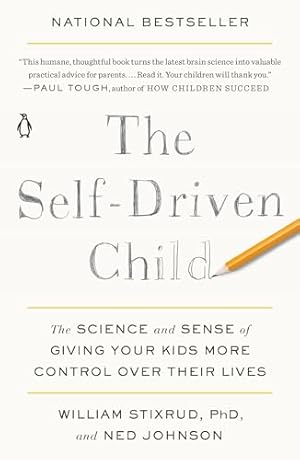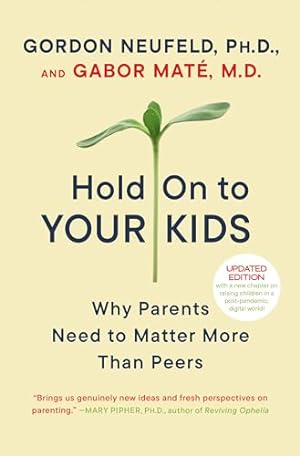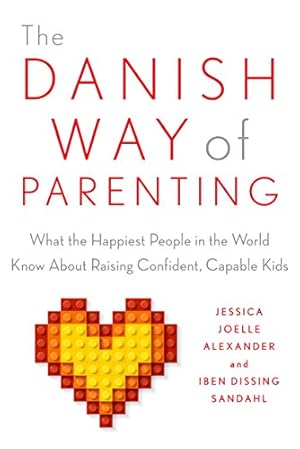| Print List Price: | $19.00 |
| Kindle Price: | $13.99 Save $5.01 (26%) |
| Sold by: | Random House LLC Price set by seller. |
Your Memberships & Subscriptions

Download the free Kindle app and start reading Kindle books instantly on your smartphone, tablet, or computer - no Kindle device required.
Read instantly on your browser with Kindle for Web.
Using your mobile phone camera - scan the code below and download the Kindle app.

Image Unavailable
Color:
-

-
-
- To view this video download Flash Player


 Audible sample
Audible sample Follow the authors
OK
No-Drama Discipline: The Whole-Brain Way to Calm the Chaos and Nurture Your Child's Developing Mind Kindle Edition

Explore your book, then jump right back to where you left off with Page Flip.
View high quality images that let you zoom in to take a closer look.
Enjoy features only possible in digital – start reading right away, carry your library with you, adjust the font, create shareable notes and highlights, and more.
Discover additional details about the events, people, and places in your book, with Wikipedia integration.
“A lot of fascinating insights . . . an eye-opener worth reading.”—Parents
Highlighting the fascinating link between a child’s neurological development and the way a parent reacts to misbehavior, No-Drama Discipline provides an effective, compassionate road map for dealing with tantrums, tensions, and tears—without causing a scene.
Defining the true meaning of the “d” word (to instruct, not to shout or reprimand), the authors explain how to reach your child, redirect emotions, and turn a meltdown into an opportunity for growth. By doing so, the cycle of negative behavior (and punishment) is essentially brought to a halt, as problem solving becomes a win/win situation. Inside this sanity-saving guide you’ll discover
• strategies that help parents identify their own discipline philosophy—and master the best methods to communicate the lessons they are trying to impart
• facts on child brain development—and what kind of discipline is most appropriate and constructive at all ages and stages
• the way to calmly and lovingly connect with a child—no matter how extreme the behavior—while still setting clear and consistent limits
• tips for navigating your child through a tantrum to achieve insight, empathy, and repair
• twenty discipline mistakes even the best parents make—and how to stay focused on the principles of whole-brain parenting and discipline techniques
Complete with candid stories and playful illustrations that bring the authors’ suggestions to life, No-Drama Discipline shows you how to work with your child’s developing mind, peacefully resolve conflicts, and inspire happiness and strengthen resilience in everyone in the family.
Praise for No-Drama Discipline
“With lucid, engaging prose accompanied by cartoon illustrations, Siegel and Bryson help parents teach and communicate more effectively.”—Publishers Weekly
“Wow! This book grabbed me from the very first page and did not let go.”—Lawrence J. Cohen, Ph.D., author of The Opposite of Worry
- LanguageEnglish
- PublisherBantam
- Publication dateSeptember 23, 2014
- File size16945 KB
Shop this series
See full series-
All 2$23.98
-
All 2$23.98
This option includes 2 books.
Customers also bought or read
- The Whole-Brain Child: 12 Revolutionary Strategies to Nurture Your Child's Developing Mind
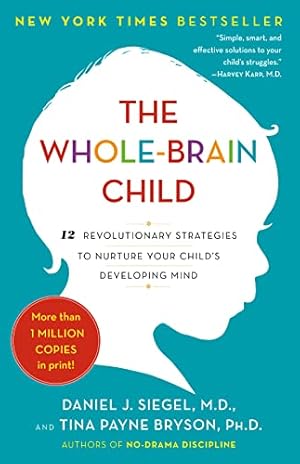 Kindle Edition$9.99$9.99
Kindle Edition$9.99$9.99 - The Yes Brain: How to Cultivate Courage, Curiosity, and Resilience in Your Child
 Kindle Edition$4.99$4.99
Kindle Edition$4.99$4.99 - How to Talk So Kids Will Listen & Listen So Kids Will Talk (The How To Talk Series)
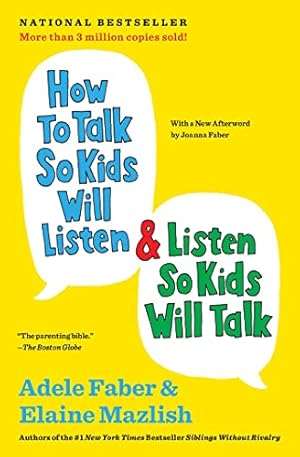 Kindle Edition$13.99$13.99
Kindle Edition$13.99$13.99 - Siblings Without Rivalry: How to Help Your Children Live Together So You Can Live Too
 Kindle Edition$9.99$9.99
Kindle Edition$9.99$9.99 - Peaceful Parent, Happy Kids: How to Stop Yelling and Start Connecting (The Peaceful Parent Series)
 Kindle Edition$14.99$14.99
Kindle Edition$14.99$14.99 - Brain Rules for Baby (Updated and Expanded): How to Raise a Smart and Happy Child from Zero to Five
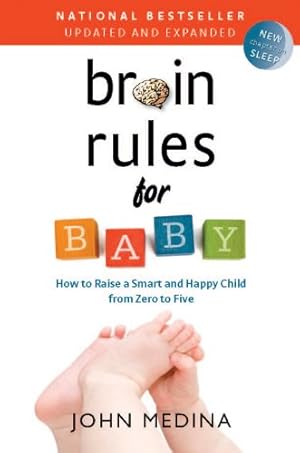 Kindle Edition$10.92$10.92
Kindle Edition$10.92$10.92
Customers who bought this item also bought
 Connection means that we give our kids our attention, that we respect them enough to listen to them, that we value their contribution to problem solving, and that we communicate to them that we’re on their side—whether we like the way they’re acting or not.Highlighted by 6,327 Kindle readers
Connection means that we give our kids our attention, that we respect them enough to listen to them, that we value their contribution to problem solving, and that we communicate to them that we’re on their side—whether we like the way they’re acting or not.Highlighted by 6,327 Kindle readers When children are securely attached to their parents, they feel safe enough to test that relationship.Highlighted by 5,800 Kindle readers
When children are securely attached to their parents, they feel safe enough to test that relationship.Highlighted by 5,800 Kindle readers Part of truly loving our kids, and giving them what they need, means offering them clear and consistent boundaries, creating predictable structure in their lives, as well as having high expectations for them.Highlighted by 5,782 Kindle readers
Part of truly loving our kids, and giving them what they need, means offering them clear and consistent boundaries, creating predictable structure in their lives, as well as having high expectations for them.Highlighted by 5,782 Kindle readers Effective discipline means that we’re not only stopping a bad behavior or promoting a good one, but also teaching skills and nurturing the connections in our children’s brains that will help them make better decisions and handle themselves well in the future.Highlighted by 5,223 Kindle readers
Effective discipline means that we’re not only stopping a bad behavior or promoting a good one, but also teaching skills and nurturing the connections in our children’s brains that will help them make better decisions and handle themselves well in the future.Highlighted by 5,223 Kindle readers Punishment might shut down a behavior in the short term, but teaching offers skills that last a lifetime.Highlighted by 4,933 Kindle readers
Punishment might shut down a behavior in the short term, but teaching offers skills that last a lifetime.Highlighted by 4,933 Kindle readers
From the Publisher



Editorial Reviews
Review
“A lot of fascinating insights . . . an eye-opener worth reading.”—Parents
“Insightful . . . The ideas presented in this latest book can actually be applied to all of our relationships, as it will help us in many circumstances to be able to calm down, have empathy for another person, and then communicate in a constructive way about our concerns and proposed solutions. What works to help children learn and behave better might also help our world’s leaders and large groups of people get along better, as many of us adults failed to develop these mindsight skills as we were growing up and we tend to sabotage our relationships with others as a result. Whether you are a parent, a teacher, or just a person who wishes to learn to get along better with others, you may find some valuable insights in No-Drama Discipline.”—Examiner.com
“Wow! This book grabbed me from the very first page and did not let go. Daniel Siegel and Tina Payne Bryson explain extremely well why punishment is a dead-end strategy. Then they describe what to do instead. By making the latest breakthroughs in brain science accessible to any parent, they show why empathy and connection are the royal road to cooperation, discipline, and family harmony.”—Lawrence J. Cohen, Ph.D., author of The Opposite of Worry
“Using simple and clear explanations, practical advice, and cartoons that make the how-to guidance come alive, this book is a rich resource for families trying to navigate meltdowns and misunderstandings. It explains how neurobiology drives children’s infuriating and puzzling behavior and will help parents make their way through the trenches of a typical day with grace, mutual respect, and a good helping of delight.”—Wendy Mogel, Ph.D., author of The Blessing of a Skinned Knee
“What a relief! Siegel and Bryson take the difficulty out of discipline, for parents or anyone who has to help kids behave. No-Drama Discipline offers a research-based, commonsense approach that any grown-up will be happy to use, and any kid will benefit from.”—Daniel Goleman, author of Emotional Intelligence
“Frustrated parents often ask me why the disciplinary techniques they are using with their children aren’t working, or are even making things worse. I have not always known what to say, because I was not always sure I understood what was going wrong. Now I know. No-Drama Discipline unlocks the secrets of discipline: what works and what doesn’t, and why—and what to do when you are pulling your hair out. Simply put, Dan Siegel and Tina Payne Bryson’s insights and techniques will make you a better parent. I know I will be using the concepts from this extraordinarily helpful book for years to come.”—Michael Thompson, Ph.D., co-author of Raising Cain
About the Author
Tina Payne Bryson, Ph.D., is the co-author (with Dan Siegel) of the bestselling The Whole-Brain Child, which has been translated into eighteen languages. She is a pediatric and adolescent psychotherapist, the director of parenting for the Mindsight Institute, and the child development specialist at Saint Mark’s School in Altadena, California. She keynotes conferences and conducts workshops for parents, educators, and clinicians all over the world. Dr. Bryson earned her Ph.D. from the University of Southern California, and she lives near Los Angeles with her husband and three children.
Excerpt. © Reprinted by permission. All rights reserved.
Siegel / NO-DRAMA DISCIPLINE
Chapter 1
ReTHINKING Discipline
Here are some actual statements we’ve heard from parents we’ve worked with. Do any of them resonate with you?
Do these comments sound familiar? So many parents feel like this. They want to handle things well when their kids are struggling to do the right thing, but more often than not, they end up simply reacting to a situation, rather than working from a clear set of principles and strategies. They shift into autopilot and give up control of their more intentional parenting decisions.
Autopilot may be a great tool when you’re flying a plane. Just flip the switch, sit back and relax, and let the computer take you where it’s been preprogrammed to go. But when it comes to disciplining children, working from a preprogrammed autopilot isn’t so great. It can fly us straight into whatever dark and stormy cloud bank is looming, meaning parents and kids alike are in for a bumpy ride.
Instead of being reactive, we want to be responsive to our kids. We want to be intentional and make conscious decisions based on principles we’ve thought about and agreed on beforehand. Being intentional means considering various options and then choosing the one that engages a thoughtful approach toward our intended outcomes. For No-Drama Discipline, this means the short-term external outcome of behavioral boundaries and structure and the long- term internal outcome of teaching life skills.
Let’s say, for example, your four-year-old hits you. Maybe he’s angry because you told him you needed to finish an email before you could play Legos with him, and he responded by slapping you on the back. (It’s always surprising, isn’t it, that a person that small can inflict so much pain?)
What do you do? If you’re on autopilot, not working from a specific philosophy for how to handle misbehavior, you might simply react immediately without much reflection or intention. Maybe you’d grab him, possibly harder than you should, and tell him through clenched teeth, “Hitting is not OK!” Then you might give him some sort of consequence, maybe marching him to his room for a time-out.
Is this the worst possible parental reaction? No, it’s not. But could it be better? Definitely. What’s needed is a clear understanding of what you actually want to accomplish when your child misbehaves.
That’s the overall goal of this chapter, to help you understand the importance of working from an intentional philosophy and having a clear and consistent strategy for responding to misbehavior. As we said in the introduction, the dual goals of discipline are to promote good external behavior in the short term and build the internal structure of the brain for better behavior and relationship skills in the long term. Keep in mind that discipline is ultimately about teaching. So when you clench your teeth, spit out a rule, and give a consequence, is that going to be effective in teaching your child about hitting?
Well, yes and no. It might achieve the short-term effect of getting him not to hit you. Fear and punishment can be effective in the moment, but they don’t work over the long term. And are fear, punishment, and drama really what we want to use as primary motivators of our children? If so, we teach that power and control are the best tools to get others to do what we want them to do.
Again, it’s completely normal to just react when we get angry, especially when someone inflicts physical or emotional pain on us. But there are better responses, responses that can achieve the same short-term goal of reducing the likelihood of the unwanted behavior in the future, while also building skills. So rather than just fearing your response and inhibiting an impulse in the future, your child will undergo a learning experience that creates an internal skill beyond simply an association of fear. And all of this learning can occur while reducing the drama in the interaction and strengthening your connection with your child.
Let’s talk about how you can respond to make discipline less of a fear-creating reaction and more of a skill-building response on your part.
The Three Questions: Why? What? How?
Before you respond to misbehavior, take a moment to ask yourself three simple questions:
1. Why did my child act this way? In our anger, our answer might be “Because he’s a spoiled brat” or “Because he’s trying to push my buttons!” But when we approach with curiosity instead of assumptions, looking deeper at what’s going on behind a particular misbehavior, we can often understand that our child was trying to express or attempt something but simply didn’t handle it appropriately. If we understand this, we ourselves can respond more effectively—and compassionately.
2. What lesson do I want to teach in this moment? Again, the goal of discipline isn’t to give a consequence. We want to teach a lesson—whether it’s about self-control, the importance of sharing, acting responsibly, or anything else.
3. How can I best teach this lesson? Considering a child’s age and developmental stage, along with the context of the situation (did he realize the bullhorn was switched on before he raised it to the dog’s ear?), how can we most effectively communicate what we want to get across? Too often, we respond to misbehavior as if consequences were the goal of discipline. Sometimes natural consequences result from a child’s decision, and the lesson is taught without our needing to do much. But there are usually more effective and loving ways to help our kids understand what we’re trying to communicate than to immediately hand out one-size-fits-all consequences.
By asking ourselves these three questions—why, what, and how—when our children do something we don’t like, we can more easily shift out of autopilot mode. That means we’ll be much more likely to respond in a way that’s effective in stopping the behavior in the short term while also teaching bigger, long-lasting life lessons and skills that build character and prepare kids for making good decisions in the future.
Let’s look more closely at how these three questions might help us respond to the four-year-old who slaps you while you’re emailing. When you hear the smack and feel the tiny, hand-shaped imprint of pain on your back, it may take you a moment to calm down and avoid simply reacting. It’s not always easy, is it? In fact, our brains are programmed to interpret physical pain as a threat, which activates the neural circuitry that can make us more reactive and put us in a “fight” mode. So it takes some effort, sometimes intense effort, to maintain control and practice No-Drama Discipline. We have to override our primitive reactive brain when this happens. Not easy. (By the way, this gets much harder to do if we’re sleep deprived, hungry, overwhelmed, or not prioritizing self-care.) This pause between reactive and responsive is the beginning of choice, intention, and skillfulness as a parent.
So as quickly as possible, you want to try to pause and ask yourself the three questions. Then you can see much more clearly what’s going on in your interaction with your child. Every situation is different and depends on many different factors, but the answers to the questions might look something like this:
1. Why did my child act this way? He hit you because he wanted your attention and wasn’t getting it. Sounds pretty typical for a four-year-old, doesn’t it? Desirable? No. Developmentally appropriate? Absolutely. It’s hard for a child this age to wait, and big feelings surfaced, making it even harder. He’s not yet old enough to consistently calm himself effectively or quickly enough to prevent acting out. You wish he’d just soothe himself and with composure declare, “Mom, I’m feeling frustrated that you’re asking me to keep waiting, and I’m having a strong, aggressive impulse to hit you right now—but I have chosen not to and am using my words instead.” But that’s not going to happen. (It would be pretty funny if it did.) In that moment, hitting is your son’s default strategy for expressing his big feelings of frustration and impatience, and he needs some time and skill-building practice to learn how to handle both delaying gratification and appropriately managing anger. That’s why he hit you.
That feels much less personal, doesn’t it? Our kids don’t usually lash out at us because they’re simply rude, or because we’re failures as parents. They usually lash out because they don’t yet have the capacity to regulate their emotional states and control their impulses. And they feel safe enough with us to know that they won’t lose our love, even when they’re at their worst. In fact, when a four-year-old doesn’t hit and acts “perfect” all the time, we have concerns about the child’s bond with his parent. When children are securely attached to their parents, they feel safe enough to test that relationship. In other words, your child’s misbehavior is often a sign of his trust and safety with you. Many parents notice that their children “save it all up for them,” behaving much better at school or with other adults than they do at home. This is why. These flare-ups are often signs of safety and trust, rather than just some form of rebellion.
2. What lesson do I want to teach in this moment? The lesson is not that misbehavior merits a consequence, but that there are better ways of getting your attention and managing his anger than resorting to violence. You want him to learn that hitting isn’t OK, and that there are lots of appropriate ways to express his big feelings.
3. How can I best teach this lesson? While giving him a time-out or some other unrelated consequence might or might not make your son think twice next time about hitting, there’s a better alternative. What if you connected with him by pulling him to you and letting him know he has your full attention? Then you could acknowledge his feelings and model how to communicate those emotions: “It’s hard to wait. You really want me to play, and you’re mad that I’m at the computer. Is that right?” Most likely you’ll receive an angry “Yes!” in response. That’s not a bad thing; he’ll know he has your attention. And you’ll have his, too. You can now talk with him and, as he becomes calmer and better able to listen, get eye contact, explain that hitting is never all right, and talk about some alternatives he could choose—like using his words to express his frustration—the next time he wants your attention.
This approach works with older kids as well. Let’s look at one of the most common issues faced by parents everywhere: homework battles. Imagine that your nine-year-old is seriously struggling when it’s time to study, and you two are going round and round on a regular basis. At least once a week she melts down. She gets so frustrated she ends up in tears, yelling at you and calling her teachers “mean” for assigning such difficult homework and herself “stupid” for having trouble. After these proclamations she buries her face in the crook of her arm and collapses in a puddle of tears on the table.
For a parent, this situation can be every bit as maddening as being slapped on the back by a four-year-old. An autopilot response would be to give in to the frustration and, in the heat of anger, argue with your daughter and lecture her, blaming her for managing her time poorly and not listening well enough during class. You’re probably familiar with the “If you had started earlier, when I asked you to, you’d be done by now” lecture. We’ve never heard of a kid responding to that lecture with “You’re right, Dad. I really should have started when you asked. I’ll take responsibility for not beginning when I was supposed to, and I’ve learned my lesson. I’ll just jump right on my homework earlier tomorrow. Thanks for enlightening me on this.”
Instead of the lecture, what if you asked the why-what-how questions?
1. Why did my child act this way? Again, disciplinary approaches are going to change depending on who your child is and what her personality is like. Maybe homework is a struggle for her and she feels frustrated, like it’s a battle she can never win. Maybe there’s something about it that feels too hard or overwhelming and makes her feel bad about herself, or maybe she’s just needing more physical activity. The main feelings here could be frustration and helplessness.
Or maybe school isn’t usually that tough for her, but she melted down because she’s tired and feeling overwhelmed today. She got up early, went to school for six hours, then had a Girl Scouts meeting that lasted right up to dinnertime. Now that she’s eaten, she’s supposed to sit at the kitchen table and work on fractions for forty-five minutes? No wonder she’s freaking out a bit. That’s a lot to ask of a nine-year-old (or even an adult!). That doesn’t mean she doesn’t still need to do her homework, but it can change your perspective—and your response—when you realize where she’s coming from.
2. What lesson do I want to teach in this moment? It might be that you want to teach about effective time management and responsibility. Or about making choices regarding which activities to participate in. Or about how to handle frustration more adaptively.
3. How can I best teach this lesson? However you answer question 2, a lecture when she’s already upset definitely isn’t the best approach. This isn’t a teachable moment, because the emotional, reactive parts of her brain are raging, overwhelming the more calm, rational, thinking, and receptive parts of her brain. So instead, you might want to help her with her fractions and just get through this particular crisis: “I know it’s a lot tonight and you’re tired. You can do this. I’ll sit with you and we’ll knock it out.” Then once she’s calmed down and you two are sharing a bowl of ice cream—or maybe even the next day—you can discuss whether she’s overscheduled, or consider that she’s really struggling to understand a concept, or explore the possibility that she’s talking with friends in class and bringing home unfinished classwork, meaning she ends up with more homework. Ask her questions, and problem-solve together to figure out what’s going on. Ask what’s getting in the way of completing her homework, why she thinks it’s not working well, and what her suggestions would be. Look at the whole experience as an opportunity to collaborate on improving the homework experience. She might need some help building skills for coming up with solutions, but involve her in the process as much as possible.
Remember to pick a time when you’re both in a good, receptive state of mind, then begin by saying something like, “The homework situation isn’t working very well, is it? I bet we can find a better way. What do you think might work?” (By the way, we’ll give you lots of specific, practical suggestions to help with this type of conversation in Chapter 6, where we discuss No-Drama redirection strategies.)
Different kids will require different responses to the why-what-how questions, so we’re not saying that any of these specific answers will necessarily apply to your children at a given time. The point is to look at discipline in a new way, to rethink it. Then you can be guided by an overall philosophy when you interact with your kids, rather than simply reacting with whatever pops out when your kids do something you don’t like. Why-what-how questions give us a new way of moving from reactive parenting to receptive and intentional Whole-Brain parenting strategies.
Granted, you won’t always have time to think through the three questions. When good-natured wrestling in the living room turns into a bloody cage match, or when you have young twins who are already late for ballet, it’s not that easy to go through a three-question protocol. We get it. It may sound completely unrealistic that you’d have time to be this mindful in the heat of the moment.
We’re not saying you’ll do it perfectly every time, or that you’ll immediately be able to think through your response when your kids get upset. But the more you consider and practice this approach, the more natural and automatic it will become to offer a quick assessment and respond with an intentional response. It can even become your default, your go-to. With practice, these questions can help you remain intentional and receptive in the face of previously reaction-inducing interactions. Asking why, what, and how can help create an internal sense of clarity even in the face of external chaos.
As a result, you’ll receive the bonus of having to discipline less and less, because not only will you be shaping your child’s brain so that he makes better decisions and learns the connection between his feelings and his behavior, but you’ll be more attuned to what’s happening with him—why he does what he does—meaning that you’ll be better able to guide him before things escalate. Plus, you’ll be more able to see things from his perspective, which will let you recognize when he needs your help, rather than your wrath.
Can’t vs. Won’t: Discipline Isn’t One-Size-Fits-All
To put it simply, asking the why-what-how questions helps us remember who our kids are and what they need. The questions challenge us to be conscious of the age and unique needs of each individual. After all, what works for one child may be the exact opposite of what her brother needs. And what works for one child one minute might not work for the same child ten minutes later. So don’t think of discipline as a one-size-fits-all solution. Instead, remember how important it is to discipline this one child in this one moment.
Too often, when we discipline on autopilot, we respond to a situation much more from our general state of mind than from what our child needs at that particular time. It’s easy to forget that our children are just that—children—and to expect behavior beyond their developmental capacity. For example, we can’t expect a four-year-old to handle his emotions well when he’s angry that his mom is still on the computer, any more than we can expect a nine-year-old not to freak out about homework from time to time.
Tina recently saw a mother and grandmother shopping. They had buckled a little boy, who looked about fifteen months old, into their cart. As the women browsed, looking at purses and shoes, the boy cried and cried, clearly wanting to get out of the cart. He needed to move and walk and explore. The caregivers absentmindedly handed him items to distract him, which just frustrated him more. This little boy couldn’t talk, but his message was clear: “You’re asking way too much of me! I need you to see what I need!” His behavior and emotional wails were completely understandable.
In fact, we should assume that kids will sometimes experience and display emotional reactivity, as well as “oppositional” behavior. Developmentally, they’re not working from fully formed brains yet (as we’ll explain in Chapter 2), so they are literally incapable of meeting our expectations all of the time. That means that when we discipline, we must always consider a child’s developmental capacity, particular temperament, and emotional style, as well as the situational context.
A valuable distinction is the idea of can’t vs. won’t. Parental frustration radically and drastically decreases when we distinguish between a can’t and a won’t. Sometimes we assume that our kids won’t behave the way we want them to, when in reality, they simply can’t, at least not in this particular moment.
The truth is that a huge percentage of misbehavior is more about can’t than won’t. The next time your child is having a hard time managing herself, ask yourself, “Does the way she’s acting make sense, considering her age and the circumstances?” Much more often than not, the answer will be yes. Run errands for hours with a three-year-old in the car, and she’s going to get fussy. An eleven-year-old who stayed out late watching fireworks the previous night and then had to get up early for a student council car wash the next morning is likely to melt down sometime during the day. Not because he won’t keep it together, but because he can’t.
We make this point to parents all the time. It was especially effective with one single father who visited Tina in her office. He was at his wits’ end because his five-year-old clearly demonstrated the ability to act appropriately and make good decisions. But at times, his son would melt down over the smallest thing. Here’s how Tina approached the conversation.
I began by trying to explain to this dad that at times his son couldn’t regulate himself, which meant that he wasn’t choosing to be willful or defiant. The father’s body language in response to my explanation was clear. He crossed his arms and leaned back in his chair. Although he didn’t literally roll his eyes, it was clear he wasn’t about to start a Tina Bryson fan club. So I said, “I’m getting the sense you don’t agree with me here.”
He responded, “It just doesn’t make sense. Sometimes he’s great about handling even big disappointments. Like last week when he didn’t get to go to the hockey game. Then other times he’ll completely lose his mind because he can’t have the blue cup because it’s in the dishwasher! It’s not about what he can’t do. He’s just spoiled and needs stricter discipline. He needs to learn how to obey. And he can! He’s already proven he can totally choose how to handle himself.”
I decided to take a therapeutic risk—doing something out of the ordinary without knowing quite how it would go. I nodded, then asked, “I bet you’re a loving and patient dad most of the time, right?”
He replied, “Yes, most of the time. Sometimes, of course, I’m not.”
I tried to communicate some humor and playfulness in my tone as I said, “So you can be patient and loving, but sometimes you’re choosing not to be?” Fortunately, he smiled, beginning to see where I was going. So I pressed on. “If you loved your son, wouldn’t you make better choices and be a good dad all of the time? Why are you choosing to be impatient or reactive?” He began to nod and broke out in an even bigger smile, acknowledging my playfulness as the point sank in.
I continued. “What is it that makes it hard to be patient?”
He said, “Well, it depends on how I’m feeling, like if I’m tired or I’ve had a rough day at work or something.”
I smiled and said, “You know where I’m going with this, don’t you?”
Of course he did. Tina went on to explain that a person’s capacity to handle situations well and make good decisions can really fluctuate according to the circumstances and the context of a given situation. Simply because we’re human, our capacity to handle ourselves well is not stable and constant. And that’s certainly the case with a five-year-old.
The father clearly understood what Tina was saying: that it’s misguided to assume that just because his son could handle himself well in one moment, he’d always be able to do so. And that when his son didn’t manage his feelings and behaviors, it wasn’t evidence that he was spoiled and needed stricter discipline. Rather, he needed understanding and help, and through emotional connection and setting limits, the father could increase and expand his son’s capacity. The truth is that for all of us, our capacity fluctuates given our state of mind and state of body, and these states are influenced by so many factors—especially in the case of a developing brain in a developing child.
Tina and the father talked further, and it was clear that he had fully understood Tina’s point. He got the difference between can’t and won’t, and he saw that he was imposing rigid and developmentally inappropriate (one-size-fits-all) expectations on his young son, as well as on the boy’s sister. This new perspective empowered him to switch off his parental autopilot and start working on making intentional, moment-by-moment decisions with his children, both of whom had their own particular personality and needs at different moments. The father realized that not only could he still set clear, firm boundaries, but he could do so even more effectively and respectfully, because he was taking into account each child’s individual temperament and fluctuating capacity, along with the context of each situation. As a result, he’d be able to achieve both disciplinary goals: to see less overall uncooperativeness from his son, and to teach him important skills and life lessons that would help him as he grew into a man.
This father was learning to challenge certain assumptions in his own thinking, such as that misbehavior is always willful opposition instead of a moment of difficulty while trying to manage feelings and behaviors. Future conversations with Tina led him to question not only this assumption, but also his emphasis on having his son and daughter obey him unconditionally and without exception. Yes, he reasonably and justifiably wanted his discipline to encourage cooperation from his children. But complete and unquestioning obedience? Did he want his kids to grow up blindly obeying everyone their whole lives? Or would he rather have them develop their own individual personalities and identities, learning along the way what it means to get along with others, observe limits, make good decisions, be self-disciplined, and navigate difficult situations by thinking for themselves? Again, he got the point, and it made all the difference for his children.
One other assumption this father began to challenge within himself was that there’s some silver bullet or magic wand that can be used to address any behavioral issue or concern. We wish there were such a cure-all, but there’s not. It’s tempting to buy into one discipline practice that promises to work all the time and in every situation or to radically change a kid in a few days. But the dynamics of interacting with children are always much more complex than that. Behavioral issues simply can’t be resolved with a one-size-fits-all approach that we apply to every circumstance or environment or child.
Let’s take a few minutes now and discuss the two most common one-size-fits-all disciplinary techniques that parents rely on: spanking and time-outs.
Spanking and the Brain
One autopilot response that a number of parents resort to is spanking. We often get asked where we stand on the subject.
Although we’re really big advocates for boundaries and limits, we are both strongly against spanking. Physical punishment is a complex and highly charged topic, and a full discussion of the research, the various contexts in which physical punishment takes place, and the negative impacts of spanking is beyond the scope of this book. But based on our neuroscientific perspective and review of the research literature, we believe that spanking is likely to be counterproductive when it comes to building respectful relationships with our children, teaching kids the lessons we want them to learn, and encouraging optimal development. We also believe that children should have the right to be free from any form of violence, especially at the hands of the people they trust most to protect them.
We know there are all kinds of parents, all kinds of kids, and all kinds of contexts in which discipline takes place. And we certainly understand that frustration, along with the desire to do the right thing for their children, leads some parents to use spanking as a discipline strategy. But the research consistently demonstrates that even when parents are warm, loving, and nurturing, not only is spanking children less effective in changing behavior in the long run, it’s associated with negative outcomes in many domains. Granted, there are plenty of non-spanking discipline approaches that can be just as damaging as spanking. Isolating children for long periods of time, humiliating them, terrifying them by screaming threats, and using other forms of verbal or psychological aggression are all examples of disciplinary practices that wound children’s minds even when their parents never physically touch them.
We therefore encourage parents to avoid any discipline approach that is aggressive, inflicts pain, or creates fear or terror. For one thing, it’s counterproductive. The child’s attention shifts from her own behavior and how to modify it, to the caregiver’s response to the behavior, meaning that the child no longer considers her own actions at all. Instead, she thinks only about how unfair and mean her parent was to hurt her—or even how scary her parent was in that moment. The parental response, then, undermines both of the primary goals of discipline—changing behavior and building the brain—because it sidesteps an opportunity for the child to think about her own behavior and even feel some healthy guilt or remorse.
Another important problem with spanking is what happens to the child physiologically and neurologically. The brain interprets pain as a threat. So when a parent inflicts physical pain on a child, that child faces an unsolvable biological paradox. On one hand, we’re all born with an instinct to go toward our caregivers for protection when we’re hurt or afraid. But when our caregivers are also the source of the pain and fear, when the parent has caused the state of terror inside the child by what he or she has done, it can be very confusing for the child’s brain. One circuit drives the child to try to escape the parent who is inflicting pain; another circuit drives the child toward the attachment figure for safety. So when the parent is the source of fear or pain, the brain can become disorganized in its functioning, as there is no solution. We call this at the extreme a form of disorganized attachment. The stress hormone cortisol, released with such a disorganized internal state and repeated interpersonal experiences of rage and terror, can lead to long-lasting negative impacts on the brain’s development, as cortisol is toxic to the brain and inhibits healthy growth. Harsh and severe punishment can actually lead to significant changes in the brain, such as the death of brain connections and even brain cells.
Another problem with spanking is that it teaches the child that the parent has no effective strategy short of inflicting bodily pain. That’s a direct lesson every parent should consider quite deeply: do we want to teach our kids that the way to resolve a conflict is to inflict physical pain, particularly on someone who is defenseless and cannot fight back?
Looking through the lens of the brain and body, we know that humans are instinctually wired to avoid pain. And it is also the same part of the brain that mediates physical pain that processes social rejection. Inflicting physical pain is also creating social rejection in the child’s brain. Since children can’t be perfect, we see the importance of the findings indicating that while spanking often stops a behavior in a particular moment, it’s not as effective at changing behavior in the long run. Instead, children will often just get better at concealing what they’ve done. In other words, the danger is that kids will do whatever it takes to avoid the pain of physical punishment (and social rejection), which will often mean more lying and hiding—not collaboratively communicating and being open to learning.
One final point about spanking has to do with which part of the brain we want to appeal to and develop with our discipline. As we’ll explain in the next chapter, parents have the option of engaging the higher, thinking part of the child’s wise brain, or the lower, more reactive, reptilian part. If you threaten or physically attack a reptile, what kind of a response do you think you’ll get? Imagine a cornered cobra, spitting at you. There is nothing wise or connecting about being reactive.
When we are threatened or physically attacked, our reptilian or primitive brain takes over. We move into an adaptive survival mode, often called “fight, flight, or freeze.” We can also faint, a response that occurs in some when they feel totally helpless. Likewise, when we cause our kids to experience fear, pain, and anger, we activate an increase in the flow of energy and information to the primitive, reactive brain, instead of directing the flow to the receptive thinking, more sophisticated and potentially wise regions of the brain that allow kids to make healthy and flexible choices and handle their emotions well.
Do you want to trigger reactivity in your child’s primitive brain, or engage her thinking, rational brain in being receptive and openly engaged with the world? When we activate the reactive states of the brain, we miss the chance to develop the thinking part of the brain. It’s a lost opportunity. What’s more, we have so many other, more effective options for disciplining our kids—strategies that give children practice using their “upstairs brain” so that it’s stronger and further developed, meaning that they’re much better able to be responsible people who do the right thing more often than not. (Much more about that in Chapters 3–6.)
Product details
- ASIN : B00JCS4NMC
- Publisher : Bantam (September 23, 2014)
- Publication date : September 23, 2014
- Language : English
- File size : 16945 KB
- Text-to-Speech : Enabled
- Screen Reader : Supported
- Enhanced typesetting : Enabled
- X-Ray : Enabled
- Word Wise : Enabled
- Print length : 290 pages
- Best Sellers Rank: #30,791 in Kindle Store (See Top 100 in Kindle Store)
- #2 in Parenting Reference
- #7 in Child Development
- #31 in Medical Child Psychology
- Customer Reviews:
About the authors

Daniel J. Siegel, M.D. is a graduate of Harvard Medical School and completed his postgraduate medical education at UCLA with training in pediatrics and child, adolescent, and adult psychiatry. He is currently a clinical professor of psychiatry at the UCLA School of Medicine, founding co-director of UCLA’s Mindful Awareness Research Center, founding co-investigator at the UCLA Center for Culture, Brain and Development, and executive director of the Mindsight Institute, an educational center devoted to promoting insight, compassion, and empathy in individuals, families, institutions, and communities.
Dr. Siegel’s psychotherapy practice spans thirty years, and he has published extensively for the professional audience. He serves as the Founding Editor for the Norton Professional Series on Interpersonal Neurobiology which includes over 70 textbooks. Dr. Siegel’s books include his five New York Times bestsellers: Aware: The science and practice of presence, Brainstorm: The Power and Purpose of the Teenage Brain, Mind: A Journey to the Heart of Being Human, and two books with Tina Payne Bryson, Ph.D.: The Whole-Brain Child and No-Drama Discipline. His other books include: The Power of Showing Up and The Yes Brain (also with Tina Payne Bryson, Ph.D.), The Developing Mind, The Pocket Guide to Interpersonal Neurobiology, Mindsight, The Mindful Brain, The Mindful Therapist, and Parenting from the Inside Out (with Mary Hartzell, M.Ed.). He has been invited to lecture for the King of Thailand, Pope John Paul II, His Holiness the Dalai Lama, Google University, and TEDx.
For more information about his educational programs and resources, please visit: www.DrDanSiegel.com and www.mindsightinstitute.com.

Tina Payne Bryson, Ph.D. is the co-author (with Dan Siegel) of two New York Times Best Sellers—THE WHOLE-BRAIN CHILD and NO-DRAMA DISCIPLINE—each of which has been translated into dozens of languages, as well as THE YES BRAIN and THE POWER OF SHOWING UP and THE BOTTOM LINE FOR BABY. She is the Founder and Executive Director of The Center for Connection, a multidisciplinary clinical practice in Southern California. Dr. Bryson keynotes conferences and conducts workshops for parents, educators, and clinicians all over the world, and she frequently consults with schools, businesses, and other organizations. An LCSW, Tina is a graduate of Baylor University with a Ph.D. from USC. The most important part of her bio, she says, is that she’s a mom to her three boys. You can learn more about Dr. Bryson at TinaBryson.com.
Customer reviews
Customer Reviews, including Product Star Ratings help customers to learn more about the product and decide whether it is the right product for them.
To calculate the overall star rating and percentage breakdown by star, we don’t use a simple average. Instead, our system considers things like how recent a review is and if the reviewer bought the item on Amazon. It also analyzed reviews to verify trustworthiness.
Learn more how customers reviews work on AmazonCustomers say
Customers find the book's advice useful and insightful. They find the concepts easy to understand and simple to follow. The book helps them have a good balance of discipline, with less stress and drama. It helps them understand their children's emotions and misbehavior. They appreciate the examples and situations that occur with different ages. The book reminds them to treat kids with respect and model good behavior. Overall, customers find the book helpful and insightful, providing hope for more peaceful parenting.
AI-generated from the text of customer reviews
Customers find the book's parenting advice useful and insightful. They say it helps them form a better bond with their children and provides practical examples. Readers mention that the book will improve many lives and is helpful for families and children, including those with autism.
"...The principles work with all kids, but I think harder for parents to implement if they themselves don’t have a strong sense of empathy and executive..." Read more
"...No wonder it’s a NY Times Bestseller! Practical applications, sometimes lacking or unsupported in similar literature, are also included, making this..." Read more
"Great book full of practical advice! Easy to follow with a good structure...." Read more
"...will provide a better home environment, but will actually help your child develop parts (upper brain) of their brain that will drastically impact..." Read more
Customers find the book's advice and techniques easy to understand. They appreciate the simple concepts and straightforward communication style. The book is well-written and provides practical strategies that work quickly to improve parent-child interactions.
"...No fluff. Lots of logic, reasoning & real-life examples, including pics, to resonate w/any caregiver/parent. No wonder it’s a NY Times Bestseller!..." Read more
"Great book full of practical advice! Easy to follow with a good structure...." Read more
"...All in all I would stay it was a well written, easy read parenting manual peppered with humor...." Read more
"...able to explain how the brain works in practical terms, so it's easy to understand...." Read more
Customers find the book helpful for addressing discipline issues at work and home. They feel it helps them have a good balance of discipline, reduces stress, and provides hope for peaceful parenting. The book offers guidance on developing appropriate and compassionate discipline that is both patient and understanding.
"...yes you need to address the bad behavior choice, but discipline is so much more effective once you gotten rid of the defensiveness and reactivity...." Read more
"...No fluff. Lots of logic, reasoning & real-life examples, including pics, to resonate w/any caregiver/parent. No wonder it’s a NY Times Bestseller!..." Read more
"...This allows you to see how No-Drama Discipline not only will provide a better home environment, but will actually help your child develop parts..." Read more
"...minds are still developing, connecting, focusing on teaching, avoiding overtalking, various ways to redirect.. all of these things are great..." Read more
Customers appreciate the book's empathy. It helps them understand their children's emotions and misbehavior, fostering nurturing relationships with their children. The book focuses on psychological and brain development, supporting healthy psycho-social environments for both parents and children. They feel closer to their kids after reading the book and maintain a neurologically and psychologically healthy relationship.
"...logic, reasoning & real-life examples, including pics, to resonate w/any caregiver/parent. No wonder it’s a NY Times Bestseller!..." Read more
"...the ideas this book presented by using common sense and treating our child with respect...." Read more
"...But it's simple. It's just kindness and respect. And it works." Read more
"...It focuses on connecting with your child, and maintaining a neurologically and psychologically healthy, loving relationship and maintaining firm,..." Read more
Customers find the book provides useful examples and insights into situations that occur with different ages. They appreciate the connections between important or simple influences, providing options on how to handle tough situations. The examples are easy to follow and apply to actual situations.
"...I also felt there were great examples, and the concepts are simple in practice, just hard for some to reimagine a dated view of discipline...." Read more
"...I like how there are many examples of situations that occur with different aged children, and how to effectively respond so that discipline is not..." Read more
"I think the overall concepts and especially the examples were super helpful, it just all could have fit in less than 20 pages...." Read more
"...It really gives you a new insight and gives you options on how to handle really tough situations. I absolutely loved it." Read more
Customers find the book helpful for parenting. They say it teaches respect and guiding parents in disciplining their children. The book is described as a humane approach to parenting and perfect for all kids.
"...Ultimately this book reminds you to treat your kids with respect and model the behavior you expect from them...." Read more
"...Simple human respect: what does each of us need, and how can we help each other get there?..." Read more
""No-Drama Discipline", provides principles of discipline for both parents and their children that supports healthy psycho-social environments for..." Read more
"I think this is a great book if you’re interested in gentle parenting approaches to discipline...." Read more
Customers appreciate the book's humor. They find it practical and engaging, with comics. The style is simple and helps establish a loving dynamic even in the midst of turmoil.
"...I would stay it was a well written, easy read parenting manual peppered with humor...." Read more
"...It is a very easy-to-read, engaging and superb book...." Read more
"...The authors’ communication style is simplistic and engaging. It is an excellent how-to book on child discipline...." Read more
"...It helps establish a safe & loving dynamic even in the midst of turmoil...." Read more
Customers have different views on the book's effectiveness. Some find it simple and kind, with a method that works well and produces good results. Others say the strategies don't work with children under 5, are repetitive, and not very useful.
"...The best part is, it actually works! I have read dozens of books, but this one is the only one that gives the tools necessary to truly help you...." Read more
"...Our communication with our children has become much more nurturing, productive, non-threatening...." Read more
"There is no perfect parenting method. What works on Monday won't work on Tuesday. What works with one child won't work with another...." Read more
"...My 2 & 4 year old have been responding really well to the techniques & I’ve really appreciated this different approach to discipline...." Read more
Reviews with images
Yes! Buy it! Research-based for laypeople
Top reviews from the United States
There was a problem filtering reviews right now. Please try again later.
- Reviewed in the United States on February 27, 2021I’ve now read this book three times. The first time I read it I highlighted important parts as I read, so when I go back about 2x a year when I feel like I’m starting to struggle, it’s a quick skim. I find the principles of this book to be spot on. Is our goal to get our kids to stop misbehaving or to raise empathetic humans who can self regulate in the future when they’re all on their own? The strategy in this book addresses both goals, but If you’re only looking at the short term goal then you might be frustrated by this book, but it boggles my mind that parents don’t also see they are responsible for creating good humans for the sake of their own children’s’ well-beings and that of society. Ultimately this book reminds you to treat your kids with respect and model the behavior you expect from them. It’s not spoiling to give a child in distress a hug, yes you need to address the bad behavior choice, but discipline is so much more effective once you gotten rid of the defensiveness and reactivity. I also felt there were great examples, and the concepts are simple in practice, just hard for some to reimagine a dated view of discipline. As a teacher, a lot of this is obvious because I do it with my students, but wasn’t applying at home. I have a 3 year old son and 6 year old daughter, and an infant, for reference, all with different personalities. The principles work with all kids, but I think harder for parents to implement if they themselves don’t have a strong sense of empathy and executive functioning skills. You have to be willing to open your mind, not just read a book that satisfies yourself urge to lay down the law and always be in control.
- Reviewed in the United States on August 8, 2023We’re struggling w/how best to discipline a strong-willed 8-year-old, w/inattentive ADHD, who’s also a child of divorce, particularly given cultural & generational differences. I’ve studied enough neuropsychology in college & independently to be familiar w/the terminology, but this book would be a pretty easy read for those w/out any such background. No fluff. Lots of logic, reasoning & real-life examples, including pics, to resonate w/any caregiver/parent. No wonder it’s a NY Times Bestseller! Practical applications, sometimes lacking or unsupported in similar literature, are also included, making this book a huge “Yes!” for me. I can’t wait to read more books by these authors!
Frustrated & confounded by our personal parenting/disciplining challenges, this book has renewed my hope about the potential to raise our kids in a healthier way than we were & about the potentially more positive short-term & long-term results for our kids & family.
I’d prefer the book be bigger & easier to fold back & highlight, but that’s the only down-side I see thus far.
I highly recommend this book to any caregiver/parent interested in doing a better job of child-rearing than they might have experienced or attempted themselves.
 5.0 out of 5 stars Yes! Buy it! Research-based for laypeopleWe’re struggling w/how best to discipline a strong-willed 8-year-old, w/inattentive ADHD, who’s also a child of divorce, particularly given cultural & generational differences. I’ve studied enough neuropsychology in college & independently to be familiar w/the terminology, but this book would be a pretty easy read for those w/out any such background. No fluff. Lots of logic, reasoning & real-life examples, including pics, to resonate w/any caregiver/parent. No wonder it’s a NY Times Bestseller! Practical applications, sometimes lacking or unsupported in similar literature, are also included, making this book a huge “Yes!” for me. I can’t wait to read more books by these authors!
5.0 out of 5 stars Yes! Buy it! Research-based for laypeopleWe’re struggling w/how best to discipline a strong-willed 8-year-old, w/inattentive ADHD, who’s also a child of divorce, particularly given cultural & generational differences. I’ve studied enough neuropsychology in college & independently to be familiar w/the terminology, but this book would be a pretty easy read for those w/out any such background. No fluff. Lots of logic, reasoning & real-life examples, including pics, to resonate w/any caregiver/parent. No wonder it’s a NY Times Bestseller! Practical applications, sometimes lacking or unsupported in similar literature, are also included, making this book a huge “Yes!” for me. I can’t wait to read more books by these authors!
Reviewed in the United States on August 8, 2023
Frustrated & confounded by our personal parenting/disciplining challenges, this book has renewed my hope about the potential to raise our kids in a healthier way than we were & about the potentially more positive short-term & long-term results for our kids & family.
I’d prefer the book be bigger & easier to fold back & highlight, but that’s the only down-side I see thus far.
I highly recommend this book to any caregiver/parent interested in doing a better job of child-rearing than they might have experienced or attempted themselves.
Images in this review
- Reviewed in the United States on September 15, 2024Great book full of practical advice! Easy to follow with a good structure. I’d recommend to any parent who is looking for strategies on how to discipline effectively without undermining the bond with a child.
- Reviewed in the United States on July 5, 2015This book was recommended by a psychiatrist for behavior issues our adopted son is struggling with. My husband is a doctor and I worked with children with behaviors as a professional, so we had already been applying many of the ideas this book presented by using common sense and treating our child with respect. There are some things (like with any modality of behavior modification) that would not have worked for us. Example: there is no way I could have allowed my child to explore a grocery store, if he started to fidget in the cart. We had to put him in the cart and keep him there until he stopped screaming. The grocery cart and the car seat were really the only non-starters of free-exploration. Now I can shop and he is at peace knowing nothing is going to hurt him, there is no way he can run around the store and grab items and bump off of people, he will get rewarded if he stays calm and I can get our grocery shopping finished. I suggest this book for any parent who is questioning themselves, it could help parents out in the sense that most parents struggle and it allows for faults and releases some guilt because partenting is a constant struggle. Most parenting books (IMO) can be reduced to a few sentences: Love your child, stay calm: always the best state of mind to handle any situation (but sometimes we all loose our Sh&% and get over it immediately if you do) and be consistent, surprises should be left for the Holidays. All in all I would stay it was a well written, easy read parenting manual peppered with humor. Yes, I would recommended it, but allow for some modifications in your own parenting style (which this books states as well).
Top reviews from other countries
 Alexandre DelwarReviewed in Canada on January 31, 2023
Alexandre DelwarReviewed in Canada on January 31, 20235.0 out of 5 stars Discipline for Millennial Parents
As a millennial, I wanted to be better at raising kids. This book makes sense. It’s not meant to solve all your problems and it acknowledged that. What it gives you is a solid foundation to discipline that you can start with and shape it as you see fit. What it says makes sense and I like that there is science behind it as opposed to someone’s opinion or personal experience. Highly recommend.
 ShwetaThakkarReviewed in India on February 20, 2024
ShwetaThakkarReviewed in India on February 20, 20245.0 out of 5 stars Amazing book
Book helped a lot on my child
Read entire book and writing this review
All tricks and psychology behind child's behavior has helped me improve to understand my child
-
 LuisReviewed in Spain on May 8, 2022
LuisReviewed in Spain on May 8, 20225.0 out of 5 stars Buen libro
Lo lei como padre y me gusto
 Charlotte ColesReviewed in Germany on May 11, 2021
Charlotte ColesReviewed in Germany on May 11, 20215.0 out of 5 stars Great Insight and Ideas
It's a brilliant book, not only giving suggestions for how to be a better parent, but also explaining why these strategies are better. During the Introduction I wasn't sure it would be a useful book for me, and then during the first chapter I was frustrated because it seemed to be saying "don't do this, this is bad, this won't help, you should do what we will suggest instead" without actually giving any suggestions for what might be better to do. As it went on, though, they start giving incredibly helpful suggestions and insights, and I think it would be useful for any parent - or, really, any person who is frequently around children - to read. I might suggest reading the conclusion first, though, where they give reassurances about it not being too late to change, about not having damaged your children up to this stage by not using these strategies, etc., because that section, in my opinion, makes a better introduction than the actual introduction. As there is a lot of information in the book, they have also made a very helpful summary at the end of the book with the various strategies so that you can make a note of that elsewhere for quick reminders rather than having to re-read the book every time you can't remember one of their strategies properly.
-
 Juliane RojasReviewed in Mexico on September 2, 2019
Juliane RojasReviewed in Mexico on September 2, 20195.0 out of 5 stars Mi libro de consulta y cabecera
Un libro increíble.
Entendiendo como funciona el cerebro se pueden aplicar estrategias prácticas muy buenas









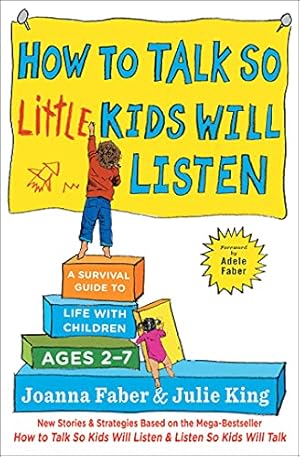


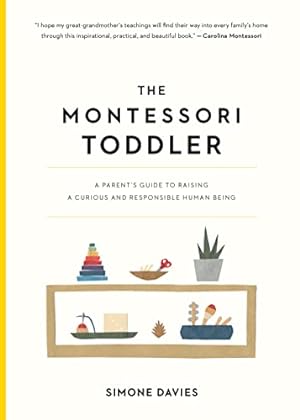





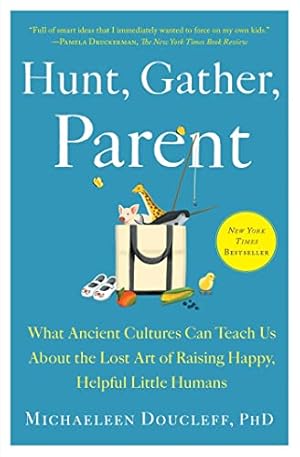




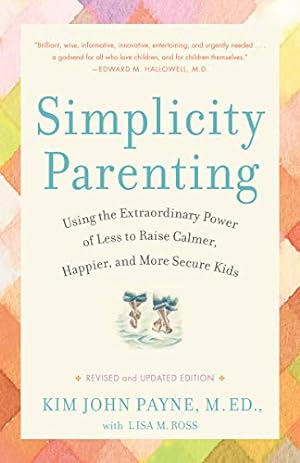





![The Explosive Child [Sixth Edition]: A New Approach for Understanding and Parenting Easily Frustrated, Chronically Inflexible Children](https://m.media-amazon.com/images/I/51fzZz774dL._UX300_PJku-sticker-v8%2CTopRight%2C0%2C-50_.jpg)
